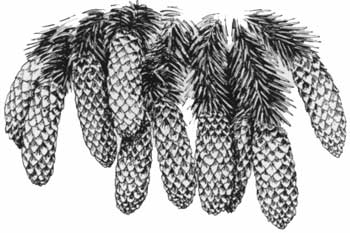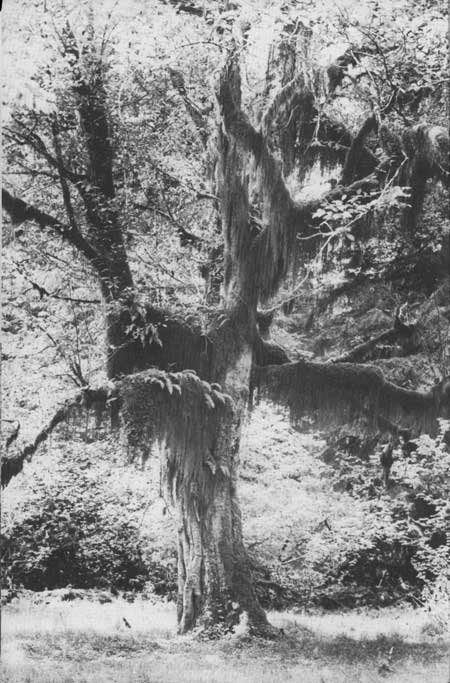|
OLYMPIC National Park |
 |

The Olympic Scene
HERE IS TRULY A LIVING WILDERNESS nurtured by the ocean! The Olympic Mountains stand first in line against the moisture-filled Pacific winds. These winds, rising and cooling on the western slopes, drop 12 to 18 feet of rain and snow on forest and mountain each year. Two extraordinary conditions result—a temperate-climate rain forest and an abundance of permanent ice bodies at comparatively low altitude. Many rushing streams return the water from snow fields, glaciers, and forest slopes to the sea. A complete and endless circuit of water from ocean to land and back to the ocean may be observed from a single mountain vantage point. Within the span of human vision, one can hardly fail to notice a water cycle of this magnitude and completeness or to appreciate its great influence on the Olympic scene.
Olympic rocks tell of their having been formed of mud, sand, and lava, uplifted from the sea; they tell of earth disturbance that alternately submerged the land beneath the sea and elevated it into mountains. The rocks and the shape of the land also tell of colder climates, when ice from the north made almost a glacier island of the Olympic Mountains, and of mountain valley glaciers which sculptured the mountains during thousands of years. The rugged beauty of the Olympic high country, enhanced by scores of mountain lakes, bears testimony to the former presence of these extensive glaciers.

Only about 11,000 years have passed since the last wave of northern ice retreated and laid bare Olympic rocks. Since then the moist and gentle climate has favored the growth of plants and the development of soil. The present Olympic forests and flowering meadows are products of a succession of plant life from the first lichens and mosses that grew on Olympic rocks. Animals returned when the ice retreated. Plant eaters and meat eaters, large and small, throve in abundance. When primitive man came, he found the land and sea kindly. He easily obtained what he needed for food, clothing, and shelter without depleting the supply.
While most of the Northwest was being explored and settled by the white man during the 19th century, the bulk of the Olympic Peninsula remained virtually unknown. Its rugged mountains, dense forests, and isolation contributed to the delayed advance of modern civilization to this northwesternmost corner of our country. The Olympic Peninsula thus remained one of the last frontiers, and the park retains genuine wilderness quality, even to its boundaries which descend to sea level.
In this piece of original America the perceptive eye and mind will find a functioning model of Nature—a model of earth forces, climate, and life.

|

|
| NPS History | History & Culture | National Park Service | Contact |
|
Last Modified: Sat, Nov 4 2006 10:00:00 pm PST |


